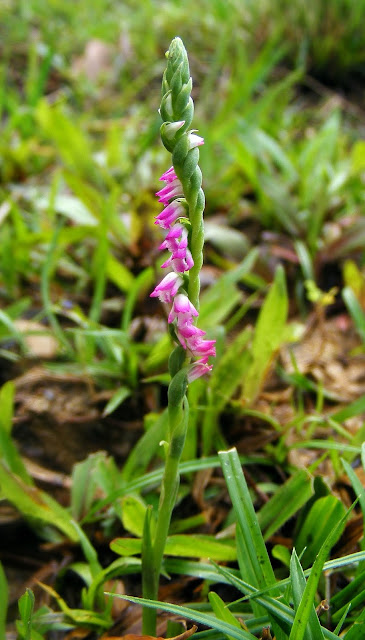An orchid weed: Spiranthes sinensis
Some orchids have extremely restricted ranges, being only found in one very specific site in just one mountain, and on the other end of the extreme are those that occur in vast swathes of territory- and I mean VAST. The plant we have here is one such species, with a range that can almost be described as ridiculous. Ladies and gents, meet Spiranthes sinensis.
How widespread is Spiranthes sinensis? It has been recorded from India, Nepal, and Sri Lanka, Afghanistan, China across mainland Southeast Asia (Afghanistan, Bhutan, Kashmir, and Mongolia), Siberia, Japan, the Ryukyu Islands, Taiwan, Korea, Peninsular Malaysia, Sumatra, Java, Borneo, Sulawesi, the Lesser Sunda Islands, East Timor, the Moluccas, New Guinea, the Solomon Islands, Vanuatu, Samoa, Niue, Northern Australia, Tasmania, New Caledonia and New Zealand. Whew. In the
This is a highly variable species as far as vegetative characters are concerned. The grass-like leaves can be up to 20 cm. (8 in.) long by 1 cm. (0.4 in.) wide with inflorescences to 20 cm. (8 in.) or more in height. However, this figure applies mostly to those from temperate regions. Philippine specimens are smaller, with leaves being only a fourth of the length stated above.
Being small plants, S. sinensis fares miserably in the company of taller and lusher neighbors, and so are only found in more open spaces where low perennials, mosses, and liverworts are apt to produce communities. This is a short-lived species, perhaps 5 years is the limit of its lifespan. And this probably explains the incredibly wide occurrence. Being transient plants, these bloom very frequently and set seeds rapidly- often within a few weeks after anthesis. Seeds germinate freely where conditions are right and this allows even vagrant plants to colonize new areas. I have even seen them on a golf course! In parts of its range, it is common and spontaneous enough to be regarded as a weed, such as in Western Australia. As one might expect, these orchids may actually have been benefitting from human-altered habitats in the same way that other terrestrial orchids do, such as Arundina graminifolia, Eulophia graminea, and Spathoglottis plicata..
I can imagine this species being grown as companion plants for smaller carnivorous plants like Drosera and Pinguicula- if you can even manage to get one. Spiranthes sinensis is not commercially available although anyone who has even a few can probably produce seedlings that grow quickly into flowering-size specimens; this is one orchid that would not demand a laboratory for propagation!






Comments
Post a Comment